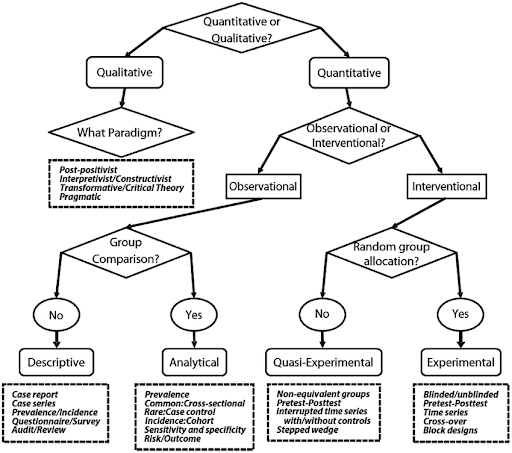Research, the systematic investigation into a specific field, is often guided by a meticulously developed plan – the research proposal. This roadmap for the research journey conceptualizes the direction of the study, outlines its objectives and outlines the methodology that will be employed. It serves as a crucial tool to attract funding and gain external validation, while laying the groundwork for the successful execution of the research project.

Image: sipyro.com
Deciphering the Blueprint: Essential Elements of a Research Plan
-
Introduction: This opening section establishes the context of the research topic, presenting a concise summary of the existing literature, the gaps in knowledge within the sector, and a clear articulation of the research aims and questions. The introduction captivates the reader’s attention, fosters interest in the topic, and sets the stage for substantial exploration.
-
Literature Review: An intricate examination of pertinent literature furnishes the backbone of the research plan. This segment provides a scholarly overview of the subject matter, meticulously assessing the key theoretical frameworks, critiquing existing empirical studies, and identifying potential avenues for further investigation. By establishing the basis of the research endeavor, the literature review illuminates gaps in understanding, which the current research aims to fill.
-
Methodology: At the core of the research plan lies the methodology, a detailed exposition of the methods and approaches that will be utilized in the research. This entails outlining the research design, data collection techniques, sample characteristics, and methods for data analysis. By providing a lucid description of the investigational procedures, the methodology ensures the rigor and reproducibility of the research findings.
-
Data Analysis: This section delves into the strategies that will be employed to analyze and interpret the research data. It encompasses statistical techniques, qualitative analysis methods, and the subsequent techniques to convey the results through appropriate visualizations and statistical summaries. The data analysis section warrants that the findings will be presented clearly, promoting comprehension and encouraging further exploration of the topic.
-
Results: This section exhibits the outcomes of the research process, presenting key findings and significant patterns observed in the data. Often presented in concise graphical representations and numerical summaries, the results furnish an empirical basis for drawing conclusions and testing hypotheses. By delivering substantial proof, the results section bolsters the credibility and impact of the overall research project.
-
Discussion: Within the discussion section, the researcher evaluates the meaning and implications of the meticulously analyzed results, considering the initial research objectives. It draws connections between the findings and recent theoretical frameworks, assesses the durability of theoretical concepts based on the collected data, and recognizes the implications and limitations encountered throughout the study.
-
Conclusion: This concluding segment distills the research efforts and offers consequential remarks regarding the achieved findings and their significance to the research community. It underscores the pioneering contributions of the project, suggests promising vistas for nascent sleuthing, and reiterates the answers provided to afore posed questions. Beyond summarizing the key outcomes, the conclusion serves as a springboard for novel inquiry and knowledge generation.
-
References: Accurately citing all resources leveraged for conceiving the research blueprint facilitates validation, transparency, and academic rigor; ensuring scholarly authenticity and establishing the ground covered by the impending investigation for further evaluation or usage
-
Budget: Suffice financial provisioning enables the investigation’s successful execution; precise costing, budgeting, and demonstrating efficient resource allocation augments the study’s approachability and funding prospects
-
Timeline: A strategic roadmap outlines the tasks, schedules, and projected completion dates mirroring significant milestones; optimizing project execution, milestones monitoring, timing resource deployment, and project delivery timeline
The Significance of a Comprehensive Research Plan
-
Institutional Acclaim: Renowned research entities and grant-making organizations demand a cohesive blueprint, scrutinizing its value to the field, approach, and resource management before approving funds, lending credibility to the project, and offering their encouragement
-
Academic Validation: Meticulous planning furnishes a framework for evaluators to appreciate the logical coherence and proficiency of the proposed investigation, affording them confidence in its likelihood of producing substantial findings
-
Efficacy: A research proposal optimizes the economical use of resources and time. It ensures essential procedures are systematically undertaken, and milestones are attained within appropriate timeframes, avoiding resource divergence and delays
-
Communication: The proposal articulately communicates the research plan, objectives, and methods to collaborative partners, investors, supervisory committees, and the wider scientific community. It ensures everyone is abreast of the scientific objective, allowing valuable input and feedback that supports the project’s trajectory and efficacy.

Image: www.pdffiller.com
A Blueprint Of Research Work Is Called
https://youtube.com/watch?v=f53GgoZidNg
Conclusion
Crafting a research blueprint serves as the cornerstone of any successful research endeavour; it establishes the directional itinerary, meticulous structure, and comprehensive approach researchers require to uncover novel insights. This crucial roadmap offers a comprehensive vision of the research project, which would otherwise be disjointed, fragmented, or inadequate. Seizing this blueprint, researchers gain profound clarity, sharpen their focus, anticipate possible pitfalls, and thus augment project viability, substantiate strategic knowledge, and disseminate experiential novelty through rigorous scholarship.

